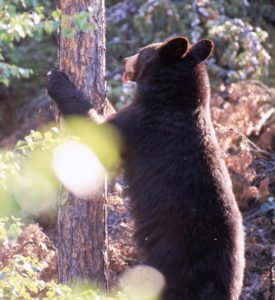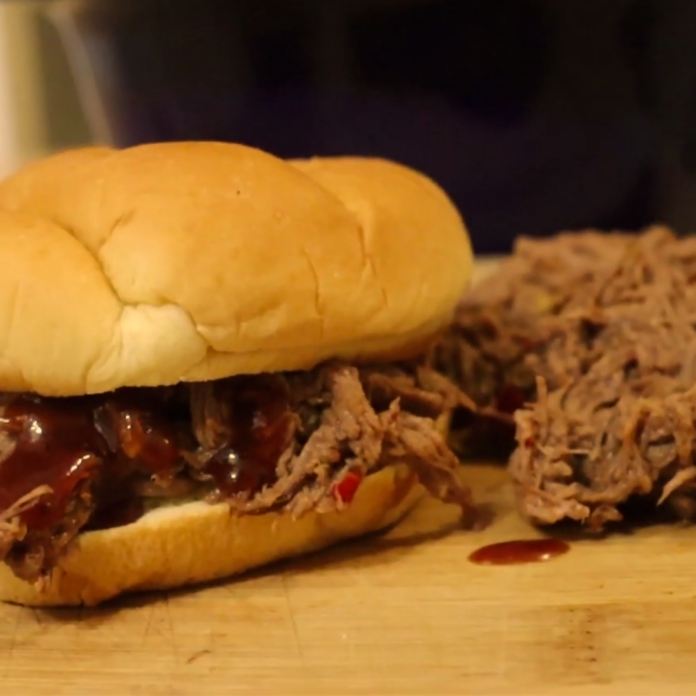BBQ Bear – A Delight You Didn’t Know You Needed
I hear it all the time – from non-hunters and hunters alike – “Is bear even good to eat?” The simple answer is an emphatic yes, if prepared properly.
Bear can be a magnificent feast or an absolute flop, depending largely on your preparation. My personal favorite? A well-executed BBQ Bear Sandwich, tender, flavorful, and stripped of any excessive greasiness or overwhelming gamey flavor. Here’s how you do it.

Choosing Your Cut
For this pulled BBQ bear sandwich, we’ll focus on the shoulder roast. It’s a cut that offers excellent flavor and is ideally suited for slow cooking methods like BBQ. Make sure you’ve followed the necessary steps to clean and prepare the meat for cooking.
Preparing Your Bear Shoulder Roast
Ingredients:
- 1 bear shoulder roast (4-6 lbs)
- Salt and pepper to taste
- 2 onions, quartered
- 4 cloves of garlic, minced
- 2 cups beef broth
- 1 bottle BBQ sauce (or homemade if preferred)
- 1/4 cup brown sugar
- 2 tablespoons apple cider vinegar
- 1 tablespoon smoked paprika
Instructions:
- Season the Roast – Start by seasoning your bear roast generously with salt and pepper. This simple seasoning lets the rich flavor of the meat shine through.
- Sear the Roast – Heat a large skillet over high heat. Add a bit of oil, then sear the roast on all sides until a rich, golden-brown crust forms. This step is optional but helps to lock in the flavor.
- Slow Cook the Roast – Place the quartered onions and minced garlic into the bottom of your slow cooker. Place the seared roast on top, then pour the beef broth over everything. Set your slow cooker to low and let it work its magic for 6-8 hours, or until the meat is tender and pulls apart easily with a fork.
- Make the BBQ Sauce – While your roast is slow-cooking, you’ve got time to whip up that BBQ sauce. Follow the instructions from our BBQ Glazed Turkey Strips article if you’re making it homemade. Otherwise, just take your favorite bottled sauce and mix in the brown sugar, apple cider vinegar, and smoked paprika. The added ingredients give it an extra kick and balance out the sweetness of the sauce.
- Shred and Sauce – Once your roast is ready, pull it apart using two forks. Drain off most of the cooking liquid, leaving just enough to keep the meat moist. Pour your BBQ sauce over the shredded meat and toss well to coat.
- Serve – Heap that delicious, BBQ-sauced bear onto a fresh bun and serve. It’s a BBQ experience like no other.
Now you’ve got the lowdown on one of my favorite ways to serve bear. Give it a try, and I guarantee you’ll be fielding requests for more at every hunting camp you visit.
If you’re interested in not just the cooking process, but also the hunting aspect of preparing your own bear meat, make sure to check out our guide on Strategies for Bowhunting Bears. This comprehensive guide will provide you with the necessary knowledge and tips to safely and successfully hunt bears, ultimately leading to the best quality bear meat for your BBQ sandwich.
Essential Tips for Cooking Bear Meat
As any seasoned hunter will tell you, harvesting the bear is only half the story. Turning that wild game into a meal that’s both safe and delicious—that’s where the true challenge lies. Whether you’re new to bear hunting or just looking for ways to step up your game in the kitchen, these tips will have you serving up bear dishes to remember. So grab your knife and cutting board, and let’s dive into the do’s and don’ts of preparing bear meat.
Tips for Preparing Bear Meat
- Prioritize Proper Field Dressing: Bear meat is not your average supermarket buy; it’s a product of the wild. As such, your first crucial step towards achieving a meal to remember starts right in the field. Aim to dress your bear immediately after the harvest. By allowing the meat to cool quickly, you help ward off any bacterial growth and spoilage.
- Trim the Fat: Bear fat can be a double-edged sword. On one hand, it can add depth to your dish; on the other, it can introduce a powerful, not-so-pleasant flavor. The rule of thumb here? Trim off as much visible fat as you can. For an even cleaner taste, consider a second trim after the initial butchering. When the meat is chilled, the fat is easier to remove.
- Bear Ain’t Pork: Sure, you can substitute bear for pork in many a recipe, but let’s be clear: bear is not pork. Its flavors and textures vary from those of pork, and it tends to lean on the leaner side. Be mindful of these differences as you cook, tweaking your methods and seasonings to suit.
- Play It Safe: With bear meat, undercooking isn’t just a question of culinary preference—it’s a matter of health safety. Why? Because bear meat can carry trichinosis, a parasitic disease transferable to humans through undercooked meat. Cook your bear to an internal temperature of at least 160°F (71°C) to ensure the safety of your dish.
- Take It Slow: Bear meat is often tougher than the meats you’re used to, especially if your bear is an older one. But don’t let this dissuade you; rather, use it as an opportunity to take it slow and keep it moist. Cooking methods like braising or slow roasting, like in our pulled BBQ bear sandwich, can help soften the meat while bringing out its rich, unique flavors. Now, you’re all set to take on the wild and wonderful world of bear cooking. Happy hunting, and even happier eating!

For additional insights on preparing and cooking bear meat, you might find this guide from the Massachusetts government particularly helpful. They offer a comprehensive guide on How to Prepare and Cook Black Bear Meat, which can serve as a valuable resource to ensure the safety and quality of your bear meat dishes.
Here’s another article work checking out, this one from Outdoor Life. It’s called Bear Meat: Everything You Need to Know About Eating Bear and trust us, it’s a goldmine. They cover all the nitty-gritty about bear meat – the good, the bad, and the seasonal differences. Plus, they share a couple of killer ways to cook up some bear. If you’re serious about making the most out of your bear hunt, from stalking in the woods to chowing down at the dinner table, this is a must-read.
One more, we happened upon this video which also seemed worth passing along:



















![The Best Deer Camp Chili [VIDEO] Deer Chili Ingredients, Tomatoes, Chili Spices](/wp-content/uploads/2015/10/Deer-Chili-Deer-Camp-Recipe-218x150.jpg)
![How to Call Elk Early in the Season [VIDEO]](/wp-content/uploads/2016/08/byers003-218x150.jpg)





![Idiots Disturb Hunter: How Would You Have Handled It? [VIDEO]](/wp-content/uploads/2015/10/DSC00110-e1474487693878-100x70.jpg)
![Albino Buck Shocked to Shed His Antlers [VIDEO]](/wp-content/uploads/2015/10/AlbinoDeer-100x70.jpg)